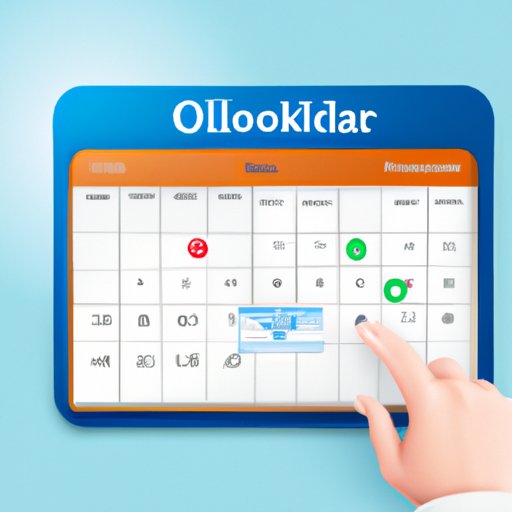
I. Introduction
If you’re looking to improve your productivity and organization, adding a calendar to your Outlook account can be a game-changer. Whether you’re scheduling meetings, appointments, or personal events, Outlook calendar offers a range of customized settings and features to streamline your scheduling and keep you on top of your commitments.
In this guide, we’ll walk you through the step-by-step process of creating and customizing your calendar. We’ll also explore the benefits of using Outlook calendar, including collaboration and integration with other apps, and offer tips and tricks for better calendar management. Additionally, we’ll provide a video tutorial to guide you through the process visually and review advanced features that can help you take your scheduling to the next level.
II. Step-by-Step Guide
The first step in adding a calendar to Outlook is to access the Calendar view. From here, you can create your calendar and move onto customizing the settings.
To create a new calendar, select New Calendar from the Home tab. You’ll be prompted to name the calendar and choose a color for it. Click OK to create the calendar, then begin adding events and appointments to it.
You can customize the settings of your calendar by selecting the gear icon in the top right corner of the Calendar view. From here, you can adjust various settings, including time zone, default reminders, and privacy options. You can also add holidays and specify your working hours.
Adding events and appointments to your calendar is simple. Click on the specific day and time when you want to schedule an event, and a pop-up window will appear asking you to enter the details of the event. Here, you can include the event’s title, location, start and end times, and any additional notes or attachments.
III. Video Tutorial
If you prefer to have a visual demonstration of the process, check out this video tutorial:
In this tutorial, you’ll also learn about additional steps not covered in the written guide, such as mobile device integration and syncing across devices.
IV. Benefits of Using Outlook Calendar
There are many benefits to using Outlook calendar, including increased productivity and organization. By keeping all your events, appointments, and tasks in one place, you can streamline your scheduling and avoid conflicts. Additionally, Outlook calendar offers collaboration and integration with other apps, such as Zoom, Slack, and Trello. This means you can easily schedule and join meetings and track deadlines without leaving your calendar.
Outlook calendar also enhances communication by allowing you to share your calendar with colleagues and receive invitations to events from others. This ensures that everyone is on the same page and reduces the risk of scheduling conflicts or miscommunications.
V. Guide to Integrating with Other Apps
If you’d like to streamline your scheduling even further, integrating your Outlook calendar with other apps can be a powerful tool. In this section, we’ll provide a tutorial on how to integrate Outlook with popular apps like Zoom, Slack, and Trello, as well as step-by-step instructions on how to integrate other calendars with your Outlook account.
VI. Comparison with Other Calendars
In addition to the benefits and features of Outlook calendar, it’s important to consider how it stacks up against other commonly used calendars. In this section, we’ll compare Outlook calendar with Google calendar and Apple calendar, highlighting the advantages and disadvantages of each.
VII. Tips and Tricks for Better Calendar Management
To optimize your scheduling and make the most of your calendar, there are several tips and tricks you can use. This section will cover setting reminders and categorizing events, sharing calendars with colleagues, using color coding to streamline scheduling, and other strategies for better calendar management.
VIII. Advanced Features of Outlook Calendar
For power users, Outlook calendar offers a range of advanced features that can take your scheduling to the next level. In this section, we’ll review recurring appointments, scheduling meetings and group events, tracking your schedule, and delegating tasks.
IX. Conclusion
Adding a calendar to your Outlook account can make a world of difference in your productivity and organization. By providing step-by-step instructions, visual demonstrations, and tips and tricks, we hope that this guide has helped you create and customize your calendar to suit your needs. Remember that experimentation is key to finding the features that work best for you, and we encourage you to explore the advanced features and integrations available to optimize your scheduling even further.





